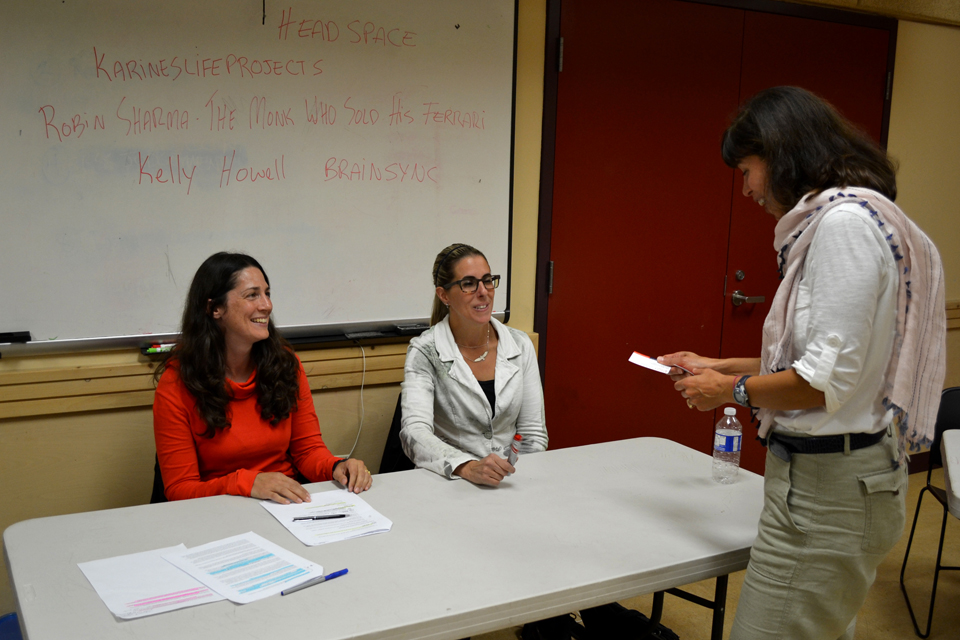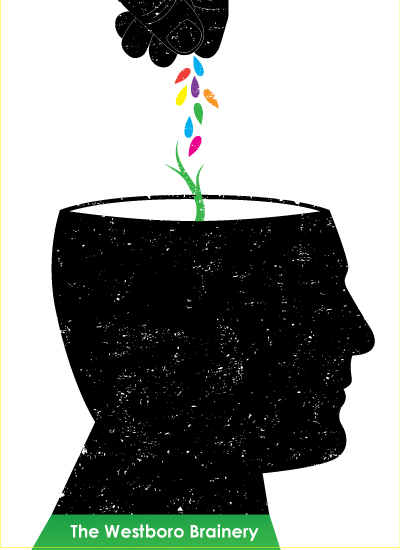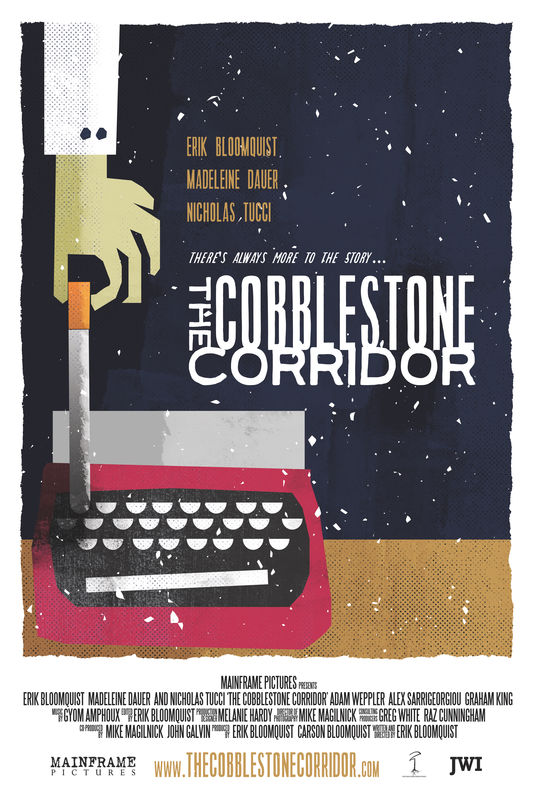Author Archive
« Older EntriesNewer Entries »
Sicario (feat. storyboard artist Sam Hudecki)
Tuesday, October 6th, 2015—FilmSicario (USA 2015, Action/Crime/Drama), Writer: Taylor Sheridan; Director: Denis Villeneuve
Breathtaking. That’s probably the best word to sum up Sicario, if I had to choose one. The film had me in its grip from beginning to end, closing in tighter with each pulsing beat.
Sicario is about idealistic FBI agent Kate Macer (Emily Blunt), who is recruited to join a covert government task force looking to curtail the drug war that rages around the Mexican–U.S. border. It’s also about cultures in crisis, and an increasingly violent world that’s showing signs of growing numb to death and destruction, and that believes more and more that the end justifies the means.
The film begins by explaining the origins of its title: sicarii was the name given to zealots in ancient Jerusalem who fought off the Roman invaders to protect their homeland; in Mexico, sicario means hitman.
That introductory text is the first heavy hit the film delivers—along with its unnerving score. Right away, Sicario makes it clear that it intends to throw open the box full of questions, each of which has no clear answer. Which land is the homeland? How can we truly tell the invaders from the protectors?
The deeper Kate delves into the operation, and the further she dives into Mexico, the more she realizes just how much darkness she’s treading in. Team leader Matt Graver (Josh Brolin) of the U.S. Department of Defense doesn’t even do Kate the courtesy of operating on a “need to know” basis; it’s more of a “deign to let you know” scenario. The cryptic Alejandro (Benicio Del Toro), who is also part of the unnamed team, presents an even bigger mystery; he’s a “ghoul” whose origins and intentions remain in the shadows as long as he can keep them there. (Dropped off the edge again down in Juarez…)
With Sicario, director Denis Villeneuve revisits some of the territory he explored in Prisoners: How far should one go in pursuit of justice or revenge? Is it okay to take the law into your own hands if the truth is tangled up in red tape? And when is violence acceptable? Where is the line that separates victim from perpetrator? The questions keep coming.
From what I can tell, to Villeneuve, violence is only acceptable when it exposes the damage done; never when it’s presented as entertainment. In the film’s opening sequence, Kate and her partner, Reggie Wayne (Daniel Kaluuya), lead a deadly raid on a house in Phoenix, Arizona. They’re looking for hostages, but instead they find corpses stacked vertically between the walls—plaster tombstones sealed by bleak paint jobs.
Even after Kate flees the house, standing in its backyard of dust as she and her team reel from the discovery, we’re not safe from what stands inside. Villeneuve takes us back to glimpse ever closer at the faces of those who fell victim to the drug cartels.
The directorial choices that make the opening sequence, and all the rest, so impactful are why Sicario left me breathless. It showcases some of the best filmmaking talents working today, led first and foremost by its profoundly gifted and ruminative director.
Aside from Villeneuve, the person who might be most responsible for the film’s chest-clenching effect is composer Jóhann Jóhannsson, who delivers a stunning score full of cello, percussion and electronics. His music haunts the movie, snaking and rattling through scenes as it makes its way from simmering to seething.
Lighting master Roger Deakins pulls off extraordinary feats of cinematography, particularly in low-light settings (including one incredible sequence in a tunnel, shot using night vision and thermal-image cameras). Taylor Sheridan’s script is brilliant (amazingly, Sicario is his debut screenplay). In the lead roles, Blunt, Del Toro and Brolin are excellent, each as skilled as they are talented. Editor Joe Walker pulls it all together, making for taut, tightly wound coil of film that threatens to snap off the spool at nearly every frame.
Those are some of the headline names associated with Sicario. But as with any film of this scale, there are of course many more artists who played a critical hand in making it happen. One of those people is storyboard artist (and Kickass Canadian) Sam Hudecki.
Sicario is Sam’s third collaboration with Villeneuve, after Enemy and Prisoners (and before next year’s Story of Your Life and their current collaboration, the Blade Runner sequel). I worked with Sam many years ago, after we graduated from Queen’s University’s film program, when he was 1st assistant camera on my short movie Sight Lines. He’s now in the midst of a pretty thrilling project, but he graciously made time to chat with me for this review and share his behind-the-scenes insights.
Sam spent three months in pre-production on Sicario, working alongside Villeneuve in New Mexico. “I really love working with him,” says Sam. “I think we established a great working relationship, and (storyboarding with him is) my favourite creative process to be in.”
It’s a process that always begins with a conversation. Going back to Sicario’s opening sequence, Sam says there was a lot to talk on that front. “Denis and I had many conversations about the nature of violence. Do you show a grenade before it goes off, or do you witness an explosion and the suddenness of that explosion? (The way we approached violence in the film) was a decision that came out of a lot of discussion around the potential impact of that opening sequence.”
There’s another sequence in the film that stands out to me, one that’s equally impactful. After the special ops team travels to Juarez to capture one of the top players in the Mexican cartel, they bring him back for “questioning” at the hands of Alejandro. Alejandro sidles down the hall and into the interrogation room, whistling all the while, toting a jug of water. When he approaches the captive, Alejandro doesn’t strike him; instead, he saunters up so close to him that the looming attack starts to feel almost intimate. It’s one of the most intimidating moments I’ve seen in a film.
Mercifully for the viewer, if not the captive, the violence takes place off-screen. We don’t need to witness it; Alejandro’s quiet menace bares all.
From everything I have seen, Villeneuve displays that sensitivity toward violence in all his films. He also shows great empathy toward women. I touched on that in my Prisoners review; to me, it’s a trademark of the director’s approach, and one I value very highly. (For more on this, see my Kickass Canadians article on Villeneuve.)
He does it again with Sicario, which strongly emphasizes Kate’s point of view in a male-dominated world. So it’s somewhat shocking (from an artistic perspective, if not a business one) to learn that backers who initially looked at the film wanted Kate replaced with a male protagonist. To make the lead character a man would completely change the story. It would be to lose Kate’s inherent vulnerability, the eyes through which we see the story—those of an outsider.
Fortunately, with Villeneuve involved, there was no need. According to Sam, “Denis brought a lot of attention and sensitivity” to Kate, something Sam himself appreciated.
“I love the fact that the protagonist is a woman,” says Sam. “She’s in a position that would be tough for anyone, but it’s particularly tough for Kate because she’s a woman on a (dangerous, questionable) mission led by men, and she has strong ideals. So her point of view was certainly something we were very acutely aware of in our approach. As (the team goes) into Mexico, we’re very aligned with Kate.”
Adopting an outsider’s perspective was a key factor for Sicario, given that the crew couldn’t film in Juarez, where many key scenes were set. We see it only from a distance, which is fitting given that our impressions of the city are framed by someone who doesn’t truly understand what she’s being drawn into. “You only get to know a hint of what’s really going on there, and that’s as far as we could take it,” says Sam.
Shooting in Mexico, if not Juarez itself, was important to the filmmakers because they very much wanted to create an authentic depiction of the area. “We looked a lot at what is really going on,” says Sam. “And while there’s artistic licence, (the film) comes from a place of being very grounded in reality.”
Still, Sam stresses that Sicario isn’t intended as “an advisory of any kind about Juarez. It’s more of a meditation about conflict (in general).”
The subject matter isn’t surprising when you consider the source; Villeneuve has become known for his penchant for exploring the darker side of humanity. But that doesn’t mean the director himself is mired in gloom.
“I read somewhere that people (assume) he must be a very dark and depressed person,” says Sam. “It’s not true; it’s actually quite hilarious and tremendously enjoyable to work with him.
“The purpose of storyboarding is just to get everyone on the same page, and that page is Denis’ vision—his dream of the film. My job is to help unlock the dream and get some of that on paper. So it’s always kind of a first blush, and I know that when Denis and I can look at each other and think, ‘This is exciting,’ I know that it will be.”
I’m still catching my breath.
* * *
Thank you, Sam, for sharing your time and thoughts with me. Here’s a shot of us and the Sight Lines cast and crew, on set in 2002 (Sam’s left of the camera; I’m to its right, in jeans):
Keep an eye out for the next two collaborations from Sam and Villeneuve, two of Canada’s greatest film talents—Arrival, set to release in early 2016, and the Blade Runner sequel, scheduled to start shooting in summer 2016.
* * *
From Tori Amos’ ‘Juarez’:
Dropped off the edge again down in Juarez |“Don’t even bat an eye | if the eagle cries,” the Rasta man says, just cause the desert likes | young girls flesh and | no angel came.
Westboro Brainery workshop a hit
Tuesday, September 29th, 2015—NewsThank you to everyone who helped make Jumping Off: Putting your personal passions into practice a success! On Monday, September 28, Mélina Craig and I led the Westboro Brainery workshop, with proceeds going to Kickass Canadians partner CARE Canada. You can read more, and see a few other photos, here.
Kickass Canadians co-hosts upcoming Westboro Brainery fundraiser workshop for CARE Canada
Monday, August 17th, 2015—NewsOn Monday, September 28, 2015, Kickass Canadians and Mélina Craig Architect are pairing up to co-host the Westboro Brainery workshop Jumping Off: Putting your personal passions into practice. Mélina and I will lead the workshop, which looks at why it’s important to pursue what you love, and how to figure out just what that is.
Brainery workshops are powered by Dovercourt Recreation Centre, which has generously agreed to donate 100% of participant fees to Kickass Canadians partner CARE Canada.
Jumping Off costs $10/participant and runs from 6pm to 7:30pm on Monday, September 28 at the McKellar Park fieldhouse. You can get the details, and register, here. Looking forward to seeing you at the Jumping Off point!
Kitchissippi Times features the Kickass Continuum
Thursday, July 9th, 2015—NewsOn Canada Day of this year, I launched the Kickass Continuum, inviting Canadians to contribute words and artwork in celebration of other Canucks they know personally. The Kitchissippi Times kindly featured me and the Continuum in its latest issue, available now on stands and online. Thank you to editor Andrea Tomkins for making it possible!
Mad Max: Fury Road
Monday, June 1st, 2015—FilmMad Max: Fury Road (USA 2015, Action/Adventure/Sci-Fi), Writers: George Miller, Brendan McCarthy, Nico Lathouris; Director: George Miller
I can attest that you don’t have to know anything about the original Mad Max movies to appreciate writer/director George Miller’s latest entry to the franchise, Mad Max: Fury Road.
The 2015 installment features Tom Hardy in the role Mel Gibson made famous in the late 70s and early 80s. I don’t know what Gibson’s portrayal was like, but in this round, Max Rockastansky is a damaged yet fierce warrior who is incapable of giving up. As he says, he’s been reduced to a single instinct: survive.
Mad Max: Fury Road is set 45 years after the world falls apart. So we don’t know exactly what year it takes place, but we can pray that it’s much, much later than 2060.
The world in which Max exists—barely—is a fiery desert (he calls it a wasteland of fire and blood), where he is “hunted by scavengers and haunted by those I could not protect.” I keep quoting the script because it’s surprisingly poetic; it really sticks with you.
In the opening sequence, Max is captured by the greedy scavengers, in spite of a ferocious and amazing attempt to escape. Chained and strung upside down, he’s used as a “blood bag” (just imagine) for the warlords who serve Immortan Joe (Hugh Keays-Byrne, who played Toecutter in the first Mad Max movie).
Immortan Joe is an aged dictator who keeps women prisoner so they can bear his children, or pump “mother’s milk” for his adult sons to guzzle. He starves the masses living below his kingdom, the Citadel—although he’s good enough to take time out to warn them of the perils of becoming addicted to water.
It’s a hellish world, and therefore an unsustainable one. Many are angry, and many more are dangerously unhappy.
One of the angriest is Imperator Furiosa (Charlize Theron). When she steals Immortan Joe’s most prized possessions (his wives, or “breeders”) in the hope of setting them free, a feverish chase ensues—one that gets Max out of the shackles. And one that lasts nearly the full two hours of the movie.
Now, I like action, but only if it’s well done and not if it goes on too long. At some point fairly early in the film, I realized that the entire thing was going to be a prolonged chase scene. I was worried for a minute, but Fury Road pulls it off. Yes, I wouldn’t have minded a few more quiet conversations between characters, or more of a reprieve. But this film is so exceptionally made that it absolutely won me over, even as someone who doesn’t love uber-long action sequences.
Miller is as much a dedicated perfectionist as he is a brilliant visionary. The effort and talent that went into making Fury Road is simply astonishing. The patience and perseverance, the stamina it would take to spend seven months in the Namib Desert, giving everything to each shot, each take, maintaining the creative energy required to deliver such an explosive and innovative final product… It kind of blows my mind to think of it.
Pick any aspect of the film to focus on and you’ll see how exceptional it is. Great genre story that creates characters and settings so established, they feel almost legendary. (Names like Toast the Knowing, and Cheedo the Fragile, are assigned with such authority; while watching, I wondered whether Fury Road was based on a series of graphic novels.) Amazing effects and stunts, inventive props and costumes, meticulous direction, stunning editing, excellent cinematography. The sound! The frenetic, pounding score by Junkie XL!
The acting. So many impressive performances. Sticking to the main three: Hardy fits the image of the classic action hero, but he brings much more than muscle to Max. Here’s a man with a great gift at conveying his depth and soul, even when barely speaking. Theron, who has to be one of our best living actors, nails it every time (see The Road); Fury Road is no exception. Nicholas Hoult, as young warlord Nux, delivers a layered and complex portrayal, treating his seemingly sleazy character with compassion, rounding him out with powerful subtext and heaps of personality.
It’s amazing how much depth the actors convey, given the sparse script they worked from. Fury Road relies on expressions, gazes and body language to capture much of its story, its pulse. Even in intimate moments between characters, the film is still more about action than dialogue.
That’s a big part of why Fury Road works. Though it may be one prolonged chase scene, it has a solid heart at its core—one that keeps you caring even if you’re far past your “action sequence” threshold (if you have one). Oh, and the action itself is spectacular.
Hats off to the filmmakers—cast and crew alike. What an achievement.
Fury Road’s follow-up, Mad Max: The Wasteland, was recently announced, with Hardy resuming the title role. I’m in.
* * *
The Fury Road panel discussion at the Cannes Film Festival offers some great insights, from the film’s cast, as well as from Miller, his producing partner, Doug Mitchell, and his editor (and wife), Margaret Sixel. Worth a watch.
The Cobblestone Corridor
Friday, May 22nd, 2015—FilmThe Cobblestone Corridor (USA 2015, Short/Crime/Mystery), Writer/Director: Erik C. Bloomquist
For various reasons, I’ve neglected this blog lately (one reason is my other website, Kickass Canadians). But I’m thrilled to return to it for The Cobblestone Corridor.
When writer/director Erik C. Bloomquist asked me to review his latest short film, it reminded me of the direction I want to steer this blog towards: interviewing filmmakers (Winter’s Tale, Northword, Take This Waltz and Barney’s Version), taking requests from indie directors to help promote their work (Wanderweg), and doing joint reviews with pals—and of course my amazing nephews (The Lego Movie, The Hunger Games: Catching Fire, Outland).
So here are my thoughts on The Cobblestone Corridor: I’m very impressed.
The 25-minute movie is a tribute to film noir and old-school detective flicks. It tracks Allan Archer (Bloomquist), editor-in-chief for the newspaper at Alfred Pierce Preparatory School, in hot pursuit of his biggest case yet: investigating the dubious dismissal of Dr. Peter Carroll, chairman of the English department.
Mannerisms and catchphrases aside (gumshoe, dame), The Cobblestone Corridor’s world is very much rooted in modern-day America. In the realm of prep school newspaper nerds (self-described!), that means going head-to-head with a public that prefers insta-news and chat rooms to well researched articles and educated commentary. The film takes pains to argue in favour of traditional journalism (although the Internet ultimately proves handy in solving a certain case…). It’s an interesting exploration, one that is particularly at home in a film that so lovingly embraces the traditions and past conventions of another form of media—cinema.
The Cobblestone Corridor has its tongue firmly planted against its cheek. Case in point, Allan’s deadpan response to a suspect who calls him four eyes: “I wear contacts now.” (The nerd of noir may have ditched his glasses, but he’s still looking through a similar lens.) Yet what brings the film home is how fully the characters, and actors, commit. They’re utterly earnest about the plot twists and developments, and the result is a charming, absorbing 25 minutes of classically contemporary storytelling.
The Cobblestone Corridor is a slick movie, with great cinematography and production design, and solid performances across the board. Kudos to the entire team.
Bloomquist in particular makes a strong impression, doing quadruple duty as writer, producer, director and star. He’s also clearly committed to getting the word out about his film; this blog can’t have a very high profile, yet he came across my Canadian site while reaching out to bloggers to promote his American film. Dedicated, hard working and talented—seems safe to say Bloomquist is going places. Visit his website to learn more.
The Cobblestone Corridor is available to rent or buy through Vimeo on Demand. The price is low, the quality high. I hope you’ll check it out.
Thanks to Erik for sending me the press kit and inviting me to comment on his work. He has inspired me, renewed my excitement for indie filmmaking, and reminded me of the power of believing in your ideas and seeing them through.
High Five: KickassCanadians.ca marks fifth year
Friday, March 27th, 2015—NewsIn honour of KickassCanadians.ca’s fifth year, I put together a tribute for the website and the people involved. It includes “lessons learned” by some of the Kickass Canadians and a preview of the Kickass Collage. I hope you enjoy it. Thanks for being part of the Kickass community.
A Most Violent Year
Thursday, February 5th, 2015—FilmA Most Violent Year (USA 2014, Action/Crime/Drama), Writer/Director: J.C. Chandor
A Most Violent Year is a tightly packed nutshell of mood and American ideology that creates a palpable tension from beginning to end. It’s as if the thing might crack open at any moment, spewing forth the violence it alludes to (but rarely shows) and releasing the microcosm of America it contains, allowing its dream-woven seed to take root.
The year is 1981, historically one of New York City’s most violent years. Abel Morales (Oscar Isaac) is a hardworking and ambitious immigrant who owns a heating oil business. He’s poised to close the biggest deal yet of his career, but his success is threatened by attacks against his salespeople and a growing number of violent robberies that send his drivers to the hospital.
As his last name suggests, Abel is committed to doing the right thing (or at least “the most right thing” to achieve one’s goals). But his wife, Anna (Jessica Chastain), who is a gangster’s daughter, has other ideas about how to get things done: “You’re not going to like what’ll happen once I get involved.”
References to The Godfather abound, as well as to Macbeth; Chastain channels Lady Macbeth in much the same way Marcia Gay Harden does in Mystic River.
The American Dream also features prominently, with two opposing experiences playing out through Abel and his driver Julian (Elyes Gabel), who doesn’t fair nearly as well in a world of violence, greed, ambition and corruption. Ultimately, it seems that success comes down to who cowers in the face of fear and who chases it into the ground. (In Abel’s words, “When it feels scary to jump, that is exactly when you jump. Otherwise you end up staying in the same place your whole life. And that, I can’t do.”)
A Most Violent Year is a captivating film. It’s a slow-going train (as Blaine Allan, one of my Queen’s University film profs, would say, “it moves at a measured pace”), but nothing is extraneous. Every stop along the way, from the dialogue to, for example, Abel’s running sequences, reveals something important about the plot or the characters. Much like Abel’s approach to business, the film is efficient and well oiled.
It also does a marvelous job of creating mood, thanks in no small part to Bradford Young’s dark, beautiful cinematography and Alex Ebert’s haunting score. And it features wonderful performances across the board, most notably from its leads. As Abel, Isaac is so very different from his role in Inside Llewyn Davis, but every bit as good. Chastain also continues to display her staggering versatility (see The Tree of Life, Take Shelter and Zero Dark Thirty).
A Most Violent Year closes with an impactful ending that comes as something of a surprise—a final stop after you thought the ride was over, and one that brings Abel’s character into sharper focus than ever before.
A most impressive film. I’ll be on the lookout for whatever comes next from its writer/director, J.C. Chandor, and from the always excellent Isaac and Chastain.
Sharing in CARE Canada’s Giving Season
Friday, December 5th, 2014—NewsIn the true spirit of the season, CARE Canada celebrates the many ways we can give back with meaning. They invited me to write a post about my fundraising and volunteering experiences, which I was happy to do. Partnering with CARE has been a wonderful development in my life, and I hope it’s brought a lot to the people who benefit from the organization’s support. Happy Giving Season!
“Bliss” up for IndieDemand Best Film of the Year
Saturday, November 8th, 2014—NewsAfter winning IndieDemand Best Film of the Month this June, my short movie Bliss is now in the running for the online film festival’s Best Film of the Year. Have a look at all the finalists, and if you like Bliss, please give me your vote. (Voting ends November 22.)
Continued thanks to the fabulous cast and crew: Kickass Canadians Miles Finlayson, Matt West & Ben Wilson and Clarke Mackey, plus the awesome Adam McLaren, Kate Smith, William Somers, Maxime Forgues, Alexi Merkis, Grant Schelske, Dave O’Heare, Laura Gauthier, Margaret Jensen-Palmer, Gavin Thompson, Kindha Gorman and Bob Coady.











